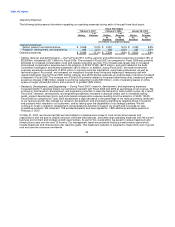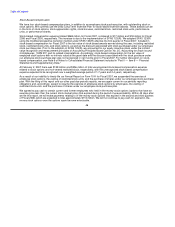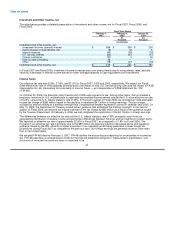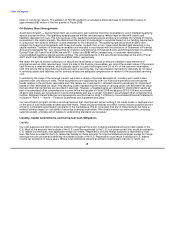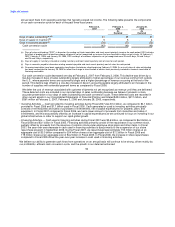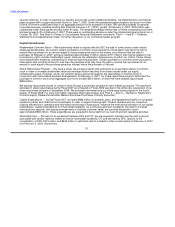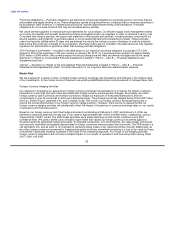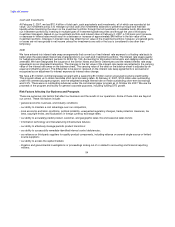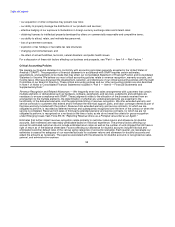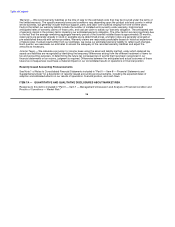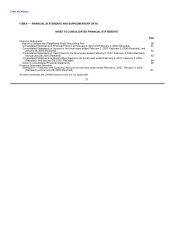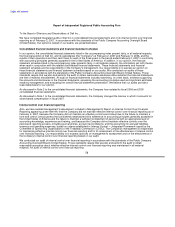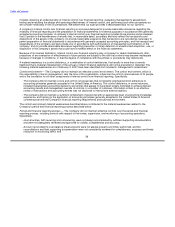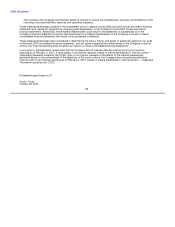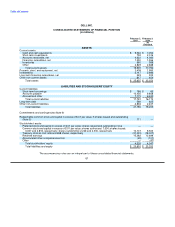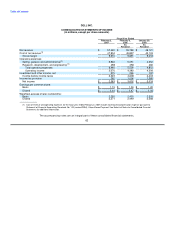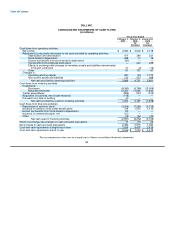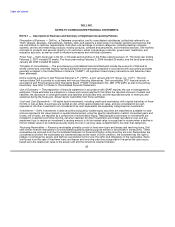Dell 2006 Annual Report Download - page 58
Download and view the complete annual report
Please find page 58 of the 2006 Dell annual report below. You can navigate through the pages in the report by either clicking on the pages listed below, or by using the keyword search tool below to find specific information within the annual report.
Table of Contents
• our acquisition of other companies may present new risks;
• our ability to properly manage the distribution of our products and services;
• effective hedging of our exposure to fluctuations in foreign currency exchange rates and interest rates;
• obtaining licenses to intellectual property developed by others on commercially reasonable and competitive terms;
• our ability to attract, retain, and motivate key personnel;
• loss of government contracts;
• expiration of tax holidays or favorable tax rate structures;
• changing environmental laws; and
• the effect of armed hostilities, terrorism, natural disasters; and public health issues.
For a discussion of these risk factors affecting our business and prospects, see "Part I — Item 1A — Risk Factors."
Critical Accounting Policies
We prepare our financial statements in conformity with accounting principles generally accepted in the United States of
America ("GAAP"). The preparation of financial statements in accordance with GAAP requires certain estimates,
assumptions, and judgments to be made that may affect our Consolidated Statement of Financial Position and Consolidated
Statement of Income. We believe our most critical accounting policies relate to revenue recognition, warranty accruals, and
income taxes. We have discussed the development, selection, and disclosure of our critical accounting policies with the Audit
Committee of our Board of Directors. These critical accounting policies and our other accounting policies are also described
in Note 1 of Notes to Consolidated Financial Statements included in "Part II — Item 8 — Financial Statements and
Supplementary Data."
Revenue Recognition and Related Allowances — We frequently enter into sales arrangements with customers that contain
multiple elements or deliverables such as hardware, software, peripherals, and services. Judgments and estimates are
necessary to ensure compliance with GAAP. These judgments relate to the allocation of the proceeds received from an
arrangement to the multiple elements, the determination of whether any undelivered elements are essential to the
functionality of the delivered elements, and the appropriate timing of revenue recognition. We offer extended warranty and
service contracts to customers that extend and/or enhance the technical support, parts, and labor coverage offered as part of
the base warranty included with the product. Revenue from extended warranty and service contracts, for which we are
obligated to perform, is recorded as deferred revenue and subsequently recognized over the term of the contract or when the
service is completed. Revenue from sales of third-party extended warranty and service contracts, for which we are not
obligated to perform, is recognized on a net basis at the time of sale, as we do not meet the criteria for gross recognition
under Emerging Issues Task Force 99-19, "Reporting Revenue Gross as a Principal versus Net as an Agent."
Estimates that further impact revenue recognition relate primarily to customer sales returns and allowance for doubtful
accounts. Both estimates are reasonably predictable based on historical experience. The primary factors affecting our
accrual for estimated customer returns include estimated return rates as well as the number of units shipped that still have a
right of return as of the balance sheet date. Factors affecting our allowance for doubtful accounts include historical and
anticipated customer default rates of the various aging categories of accounts receivable. Each quarter, we reevaluate our
estimates to assess the adequacy of our recorded accruals for customer returns and allowance for doubtful accounts and
adjust the amounts as necessary. The expense associated with the allowance for doubtful accounts is recognized as sales,
general, and administrative expense.
55


